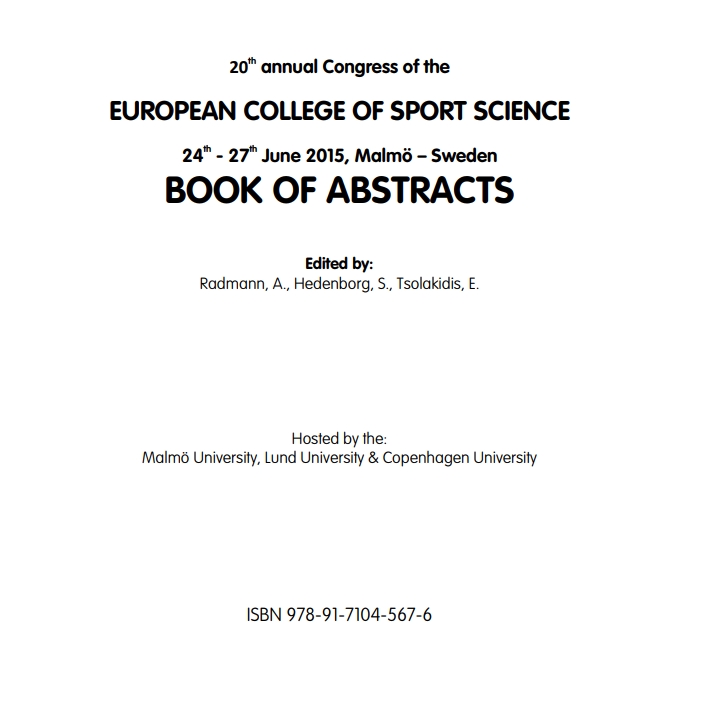Tornaghi M.1, Bosio A.1, Ferioli D1, Morelli A1, Martin D.T.2, Menaspà P.2,3, Fell J.4, Rampinini E.1
1, Mapei Sport (Olgiate Olona, Italy);2, AIS (Canberra, Australia);3, ECU (Perth, Australia); 4, UTAS (Tasmania, Australia)

Subjects unaccustomed to eccentric (ECC) exercise can experience muscle damage (MD) and related side effects (decreased resistance and endurance performance) the days following exercises involving ECC contractions. Aim of this study was to measure delayed onset muscle soreness (DOMS), creatine kinase (CK), maximal voluntary contraction (MVC), voluntary activation (VA) and neuromuscular functions (NMF) of the quadriceps during a familiarization period to ECC cycling. Eight amateur cyclists completed 11 sessions (2/week) of ECC. Each session consisted in alternating low (40%) and high intensity ECC (50-120% of aerobic PPO) on a custom-built cycle ergometer. The workload increased weekly and the last week was for tapering. At each session heart rate (HR) and RPE were measured. DOMS (0-10) asked at 24 and 48 hours post sessions. Once a week CK, MVC, VA and NMF were measured Pre and Post session. Average HR during ECC was different (p=0.012) throughout the familiarization period and a strong trend was seen for RPE (p=0.058). These variables tended to match the weekly increase of the workload. CK was stable on normal values during the period. Average DOMS24 (2.9±2.0 week1 and 0.1±0.4 week6) was higher (m.e. of Time p=0.002) than DOMS48 (1.6±1.8 week1 and 0.1±0.4 week6) and overall tended to decrease (m.e. of Weeks p=0.098) during the familiarization. Baseline MVC and VA did not vary throughout the familiarization period and a similar pattern was found for Pre-Post ECC % changes. However, after the session examined, a strong trend (p=0.053) towards a MVC reduction at Post vs Pre was present. Only baseline Peak Twitches (PT) at 1Hz tended to be higher during the last 3 sessions of the familiarization compared to the earlier session. PT % decrements on the last session were lower compared to the previous sessions at 1, 10, 100 Hz. PT % decrement was found lower on session 2 compared to 1 for stimulation at 1Hz. Evidence from the present study suggests that the criteria used during the 6 weeks of familiarization to ECC seem appropriate to decrease the main markers of muscle damage. It is interesting to emphasize that none decrease of baseline MVC and NMF (the most likely cause of performance decline in presence of MD) was present in spite of a continuous increase of the ECC workload throughout the familiarization. A decrease of DOMS (the most annoying sign of MD) towards its complete absence might be an advantage also from a perceptual point of view.
Book of Abstract ECSS Malmö, 20-1514